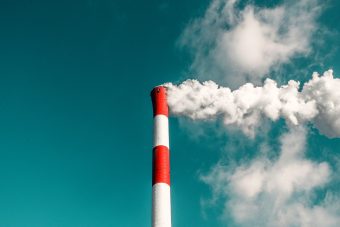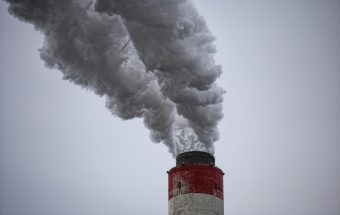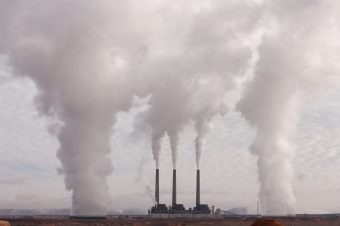
As part of the “FOI-4-ALL“ competition, conducted by the Bureau for Social Research in cooperation with the Partners for Democratic Change Serbia, and Law Scanner, the Fractal organization has got down to a research task on how much the monitoring of air quality at the local level is current, receptible, and available to the public. The project is funded by the Delegation of European Union to the Republic of Serbia.
The Fractal organization was founded in 2001 in Belgrade with a mission to promote communication, trust, and cooperation between people from different backgrounds. Guided by the same idea, representatives of Fractal and their associates also carry out the action entitled “For better air quality through transparent and responsible data management”.
Members of Fractal and associated organizations wanted to determine the extent to which omissions arise in the implementation of the Law on Air Protection and the Law on Environmental Protection through the receipt, and insight of contracts, reports, and all other available documents of the Institute of Public Health and other relevant institutions responsible for measuring.
According to the annual report of the Environmental Protection Agency, the cities with the worst air quality in our country are Uzice, Valjevo, Subotica, Sremska Mitrovica, and Kragujevac. The troublesome fact is that Kosjeric and Smederevo are excluded from the report because of an insufficient number of measurements and data volumes.
All of these cities are based on heavy and light industry. These productions plants produce not only products for the market, but also a large quantity of pollutants harmful to human health and natural environment. For this reason, it is essential that the residents of these cities have easily accessible, current, and understandable information about the state of their environment.
Local self-governments in Serbia are obliged to publish, on their official websites, the data they receive from local air monitoring networks and to make them visible and understandable. The research efforts of the Fractal Team gave insight into whether the situation “on the ground” corresponds to a legally prescribed reporting model.

A report by the World Health Organization states that about seven million people die annually due to exposure to fine particles in polluted air that penetrate deep into the lungs and cardiovascular system, causing stroke, heart disease, lung cancer, chronic obstructive pulmonary disease and respiratory infections.
Nine out of ten people worldwide breathe excessively polluted air. Citizens of Uzice, Valjevo, Subotica, Mitrovica, Kragujevac, Kosjeric, and Smederevo do not belong to that small group of lucky people who have the luxury to live their life to the fullest. Therefore, they should have easier access to the results of air quality monitoring in their municipalities, as well as health recommendations on how to protect themselves when air pollution is extremely high.
Is it how it works in
practice?
Finding air quality data on the websites of the cities of Valjevo, Kragujevac, Subotica, Sremska Mitrovica, Smederevo, Uzice, and Kosjeric and their local Institutes of Public Health is a real research undertaking for an average citizen, who needs apart from the Internet, nerves of steel. It is precisely the lack of transparency on the website of the city of Valjevo that has forced us to contact the competent authorities to check that we did not overlook some segment of their site. However, the answer is missing – unless we count “Thanks, the City of Valjevo” as a clear enough direction. We have come to the requested data, but not with this gratitude.
On the official website, the most current information available is the Annual Report on air quality control in Valjevo and the monitoring of the impact of polluted air on human health in 2018 and the Report on air quality for December 2018. Citizens of Valjevo can access these data within the subsection Environmental Protection in the Documents section. However, the average citizen will not be very much aware of the fact that the mean annual concentration of soot in the territory of the city of Valjevo was 14 milligrams per cubic meter – unless he knows how much the legally prescribed upper limit is. Apart from this, although the authority of the Institute of Public Health of this municipality states that they are responsible for chemical air testing, we were not able to come up with the result of this study on the site of the Institute we were not able to come up with the result of this study.
When it comes to the site of the city of Kragujevac, a link to the Institute of Public Health is available on it, but information on air quality is not. Even on the Institute’s website, the most we could find is a general text on air pollution, with measuring points and parameters for air pollution in Kragujevac.
On the site of the city of Subotica you can find annual reports and a map with stations for measuring air quality. But if you are extremely dedicated to “searching” for air quality data, you will also find a link that will take you to the Environmental Protection Agency website where you can see the state of the air in real time. On the map of the Environmental Protection Agency, the presented information is very clear since each level of air quality has its proper colour in the legend: excellent – green, good – blue, acceptable – yellow, polluted – red, and very polluted – purple. The only thing that could confuse is the fact that the red colour is not the one that marks the highest alarm level. Within the Public Health Institute Subotica, there is a Department for Environmental Protection with several laboratories, one of which is a Laboratory for Physical and Chemical Investigations of Air pollution, but apart from the description of its activities on the website of the Institute, we were not able to find the results of its work.

Citizens can find the Annual report on the state of air during the last year, and the last available monthly report is December 2018 on the official website of Sremska Mitrovica. As we have already mentioned, this kind of reporting about air quality is not only time consuming to the inhabitants, but potentially not easy to understand. The site of the
Institute of Public Health of this municipality, in the section for air, offers the services of analyzing the air.
Smederevo residents can view monthly reports on air quality from January to November 2018. In the absence of a municipal Institute of Public Health, these pieces of information were provided by the Institute of Public Health Pancevo.
Uzice and the Institute of Public Health Uzice make the best example in the field of air quality monitoring. The link from the municipal website leads to the Institute, which provides insight into the state of air pollution in such a way that it is understandable to an ordinary person. Measuring points are located in Uzice and Sevojno. Apart from the measured values and the air quality index and its explanation, the citizens of Uzice can monitor the state of air through descriptive categories, such as good and moderately good, which are presented in the table with adequate colours. The review also contains recommendations for citizens in situations where air pollution levels are exceeded, as well as the history of pollution and more detailed information.
At the official presentation of the Municipality of Kosjeric, we were unable to find information about the air. Kosjeric does not have the Institute of Public Health.
As a key problem of the websites of these cities and institutes, we saw their disorganization and maladjustment to modern trends with a lot of information that are displayed without a logical sequence. In this multitude of data on sites, it is challenging for users to find any information they need, including those related to air.
Even the official website of Uzice with an excellent display of information on the state of air which we have highlighted as a positive example has certain shortcomings in the aesthetic sense.
Given the fact that the residents of these communities face the problem of severe air pollution, city authorities should improve the availability of this information to their citizens, but also modernize the websites comprehensively. Reports are often outdated, but also unclear to ordinary citizens.

It turns out that the obligation to inform citizens about air quality is like a dead letter. The search for data in this area on the official internet presentations of the mentioned cities looks like roaming around in the labyrinth. Therefore, it is necessary to work on improving transparent and responsible citizen reporting on the state of the environment and the more efficient implementation of the Aarhus Convention in Serbia.
This text was prepared by Fractal team within the project entitled “For better air quality through transparent and responsible data management”. The project is implemented as a part of the “FOI-4-ALL“ competition in cooperation with Partners for Democratic Change in Serbia, Law Scanner, and the Bureau for Social Research, and is funded by the Delegation of the European Union to the Republic of Serbia.
Read the whole article in the new issue of the Energy portal Magazine on ENERGY EFFICIENCY, June 2018. – August 2019.


